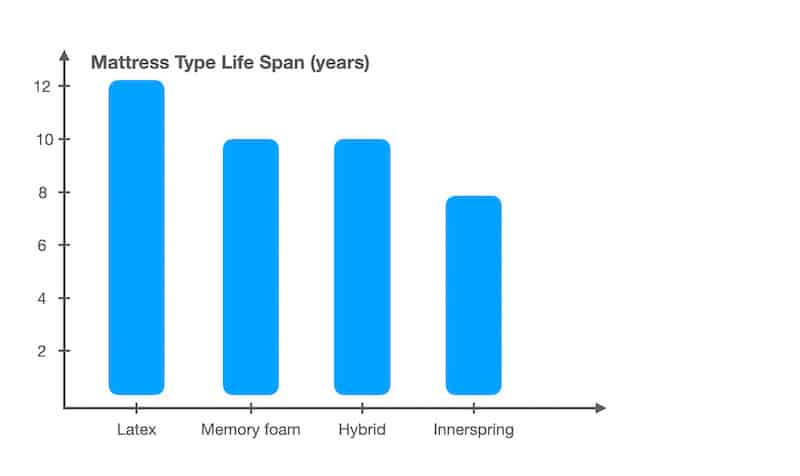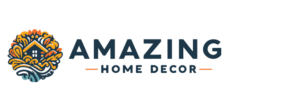
You’ve had your mattress for several years, but you aren’t sure if it needs replacing yet.
Often a scenario many find themselves in! However, even in the event when it’s clear your mattress is sagging and needs replacing, you still have the difficult task of deciding which new one you should get.
In this guide I point you in the right direction by going through the following factors that WILL help you determine what mattress suits your needs.
We will be addressing the following questions:
“Understanding the relation between spine health and mattress choices is significant for anyone facing back problems or endeavoring to maintain a good posture. I recommend a medium-firm mattress to my patients as it can provide the necessary support to your back while maintaining the natural curve of the spine.”
Dr. Jesper Pedersen, Chiropractic Professional
Does Your Existing Mattress Need Replacing?
It’s possible that your mattress needs replacing and you don’t even know it. Firmness may start to deteriorate without realizing it as the breaking down of the mattress happens at a slow pace.

As a general rule, after 9-10 years it’s likely time to change that mattress, but that figure isn’t set in stone and depends on the technology of your mattress, its quality, and if you’ve taken good care of it. By cleaning your mattress thoroughly every 3 to 6 months, you’ll help maintain and extend its life expectancy.
On that note, let’s take a look at the average life span of a mattress, depending on what material they are made from:
* Notice, the average life expectancy is about 10 years!
Remember, these figures are good bench marks, but also pay close attention to what your body feels and is telling you.
Do you find it hard to fall asleep as you’re unable to find a comfortable position? Have you started to acquire joint pains? Do you feel pressure on your spine? If so, it might be time to consider a natural latex topper to rejuvenate your mattress before replacing it entirely?
If so, it’s time to get a new bed!
u003cpu003eThe best mattress option for you will depend on the position that you sleep. Firm mattresses are better for people who sleep on their back, soft mattresses for people who sleep on their side and medium mattresses for people who sleep on their stomach. u003c/pu003e
The Correlation Between Mattress Firmness & Sleeping Position
Tossing and turning is common amongst us when we sleep, but we usually favor one position over the rest (for example, I am a side sleeper).
Your position type is one of the main factors for determining the type of mattress you need (I’ve got a nice, simple explanation here on how sleeping positions may promote back pain and add pressure to joints when sleeping on the wrong mattress).
The reason this is important is because mattresses are specifically designed for different kind of sleepers. There is no one-fits-all solution, so choose carefully!
Stomach sleepers
This type of sleeper responds better to a firmer mattress. The reason being, a firmer mattress provides more support and prevents the stomach from sinking into the mattress too much. Visualize your stomach sinking in and your back arching as a result.
Back sleepers
Medium firm mattresses suit back sleepers as a whole as it offers support to the back. Most people have a curvature on their lower back and allowing the upper back to sink into the mattress, this means the lower back contacts the mattress which offers support as a result.
Side sleepers

With less body surface area contacting the mattress and therefore sharper pressure points, a softer mattress is best suited. A hard surface would dig into the shoulder, hip and knee causing discomfort. A medium mattress would do a better job, but might not be soft enough to relieve the discomfort entirely. The shoulders, hips and knees need to sink deep enough so the rest of the body is supported by the mattress (distributing your weight more evenly across your body)
What Role Weight Plays
So far our guide provides a good ball park on how to pick the right mattress, however, sometimes a new factor can be introduced to the equation that throws the whole thing out of whack.
So far we’ve discussed the firmness required for the ‘type’ of sleeper you are and concluded the following:
However, let’s take the example of a side sleeper who would ordinarily fall into the category of needing a soft mattress. If this individual happens to be considerably heavy, then the soft option might promote too much of a sinking effect, and a medium mattress would than be a better option.
What Types Of Mattress Are On The Market?
Exploring the most important mattress features when shopping is paramount, and that mainly depends on the type of mattress it is.
With different ‘types’ of mattresses coming out on the market, this provides more options and solutions to the public. However, at the same time, it brings more confusion as it gets trickier to decide which best suits your needs and which brand to go for.
Before making your purchase, let’s first take a look at the 3 most popular options that are on the market today!
Memory foam
This material is know for hugging the contours of your body (as see on TV when it bounces back in place after weight is applied to it) and great for motion isolation for couples who share a bed.
This responsive, contour hugging material is what allows pressure relief on vulnerable areas of the body such as joints and lower back
Potential issue: Memory foam properties however absorbs body heat easily (especially when it hugs your body). If you naturally sleep cool, this option is a good choice, however, hot sleepers will find this problematic.
That’s not to say all memory foams sleep hot, as manufacturers have found ways to combat this problem by using added materials or channelling grooves to dissipate heat. Some even have technology to remove sweat stains, which can be a common issue with memory foam mattresses.
Memory foam mattresses prices start at $180 dollars and will resist over 200 pounds without issues.
Latex
Think of latex as similar to rubber. It’s more responsive and returns to its original shape quicker.
Some latex mattress products are synthetic which are manufactured using petrochemicals, but there are companies out there using natural latex compound extracted from the rubber tree (a good environmentally friendly options for those concerned about our planet). Just take in consideration that natural latex is 2 times more expensive.
Unlike memory foam, latex is naturally cooling, making it a material that does not sleep too hot. To enhance this cooling effect, consider pairing your latex mattress with bamboo sheets for an even more comfortable sleep experience.
These mattresses are a cheaper option, with prices starting at $130. They are also very durable, resisting over 250 pounds of weight.
Traditional innerspring
The limitation to innerspring mattresses is that traditionally they are limited with no added layers above the spring coils, making support adjustments limited.
This bare-bone design has been fading in popularity but replaced with the addition of multiple layers above the coils designed to accommodate a multitude of sleeper types.
One advantage is the springs are bouncy, which in turn allows the sleeper to change position with little effort. This system too retains very little heat providing a cooler sleep.
The cheapest innerspring mattresses come at $99 dollars, however we recommend spending a little bit more since these mattresses can have very low quality.
Editor’s Closing Thoughts
A guide can only point you in the correct direction, and if anything, assist with narrowing down your options to a certain point.
After this, it’s a case of physically going into the store and trying out the mattresses for yourself before making your purchase. Mattress stores have sales very often, you can find a great deal and save more than 30% in some cases. Once you’ve found your perfect mattress, consider how it will fit into your bedroom decor. For inspiration, check out our white bedroom lookbook for ideas on creating a serene sleep environment.
However, even then, you’re never going to know until giving the mattress a good trial, which is why we recommend mattresses with a money guarantee!





A sagging mattress can really play havoc with one’s back, and I’m saying this out of personal experience. While it’s not easy to decide on a new one, your comfort and health must always come first; a lesson I learned the hard way.
You’re onto something, Jetson; I’ve seen multiple patients with aggravated back issues that stemmed from sleeping on sagging or outdated mattresses; it’s crucial not to ignore when significant discomfort occurs.
I absolutely agree with the need for the right kind of mattress to support good health and well-being. In my years as a therapist, I’ve seen countless patients whose pains were alleviated simply by switching their mattresses. It’s essential to note that what works for one person might not work for another – it’s very much about understanding your body’s unique needs.
I bought a memory foam mattress last year, thinking it would solve my back pain issues, but it didn’t help at all, and I woke up stiff most mornings. I then tried a hybrid mattress which was slightly better initially, but within a couple months didn’t provide the support my back needed and the pain persisted.